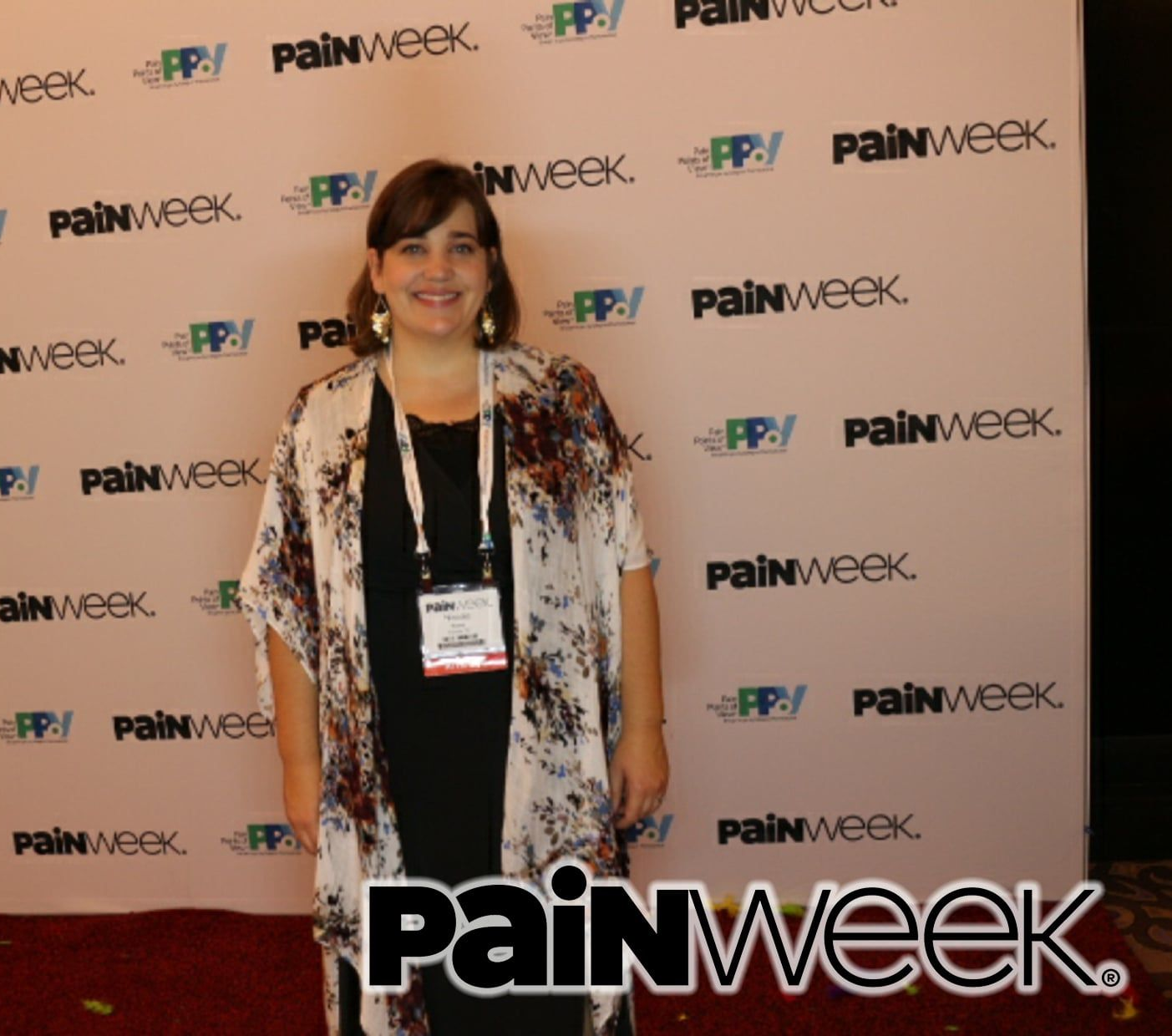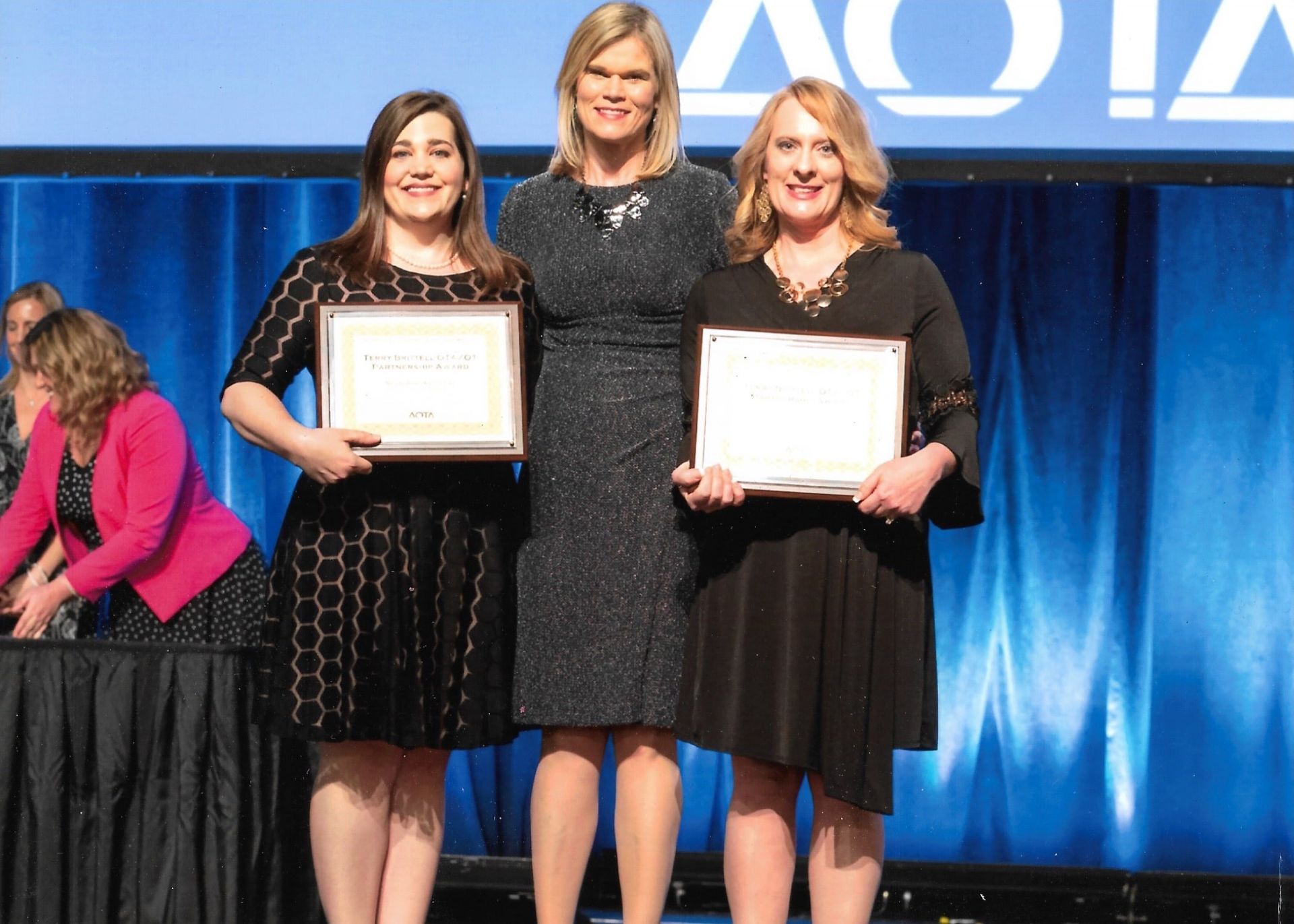
Every year hundreds of healthcare professionals attend the PainWEEK conference in Las Vegas. The conference aims to provide education regarding the treatment of pain. Each year PainWEEK offers an essay contest as a way to provide scholarships to attendees. In 2019, Aspire OT Founding Partner Niccole Rowe, BA, COTA/L's essay was chosen as the top essay in the scholarship contest. She wrote about the stigma that those who have pain face in their daily lives. Read her submission below.
*Note: At the time the essay was written, Niccole was working as part of a private practice. Niccole is no longer an employee at the private practice.
2019 PainWEEK Top Essay by Niccole Rowe, BA, COTA/L
A sad litany of phrases has become common place when listening to those who have chronic pain. “No one believes me.” “They told me it was all in my head.” “They will just act like all I want is meds.” As an occupational therapy practitioner who works at a multidisciplinary pain management center, I hear these words so often from the patients I work with. Many times, the patient is discussing treatment encountered at other facilities from healthcare workers. Other times these words are about family or friends. But one thing is clear, the daily struggle that these folks have against the stigma of others regarding a medical condition, one that they did not ask for, the condition of chronic pain.
The Pain Management Best Practices Inter-agency Task Force Report identifies stigma as a critical topic that must be addressed in order to provide better care for those with pain. The stigma can act as a barrier to access to care, increases risk for behavioral health issues, and affects relationships in the patient’s life. In the complex world of pain treatment, how do healthcare practitioners work to reduce stigma? The research literature and number of case studies are growing at an astounding rate as the practice area of treating pain is ever-changing and grows more and more complex. Despite the demands of keeping up with these changes, it is essential for us as healthcare practitioners to ensure that we are addressing stigma at many levels including system and personal.
In East Tennessee, the challenges of stigma shine clearly. The clinic where I work offers a biopsychosocial approach through multidisciplinary modalities in a geographic area where both chronic pain and opioid abuse have touched almost everyone in some way through self, family, or friends. As an occupational therapy assistant, I work closely with each patient I treat at our multidisciplinary clinic providing occupational therapy services with the goal of ultimately increasing participation in daily life to lead to better satisfaction and enjoyment despite having pain. One of the best tools that I have to help the clients I serve is the tool of active listening. I find that these patients are desperate to talk to someone who sees them as an individual and not as someone who has chronic pain. I use these amazing facts and information that patients gift me with to begin to provide individualized training into how to self-manage their chronic condition through better understanding of pain, coping strategies, positioning, body mechanics, and a good dose of cognitive behavioral therapy thrown in throughout. You can bet I hear a lot about the stigma that these patients have faced. I work to help these patients cope with that stigma and become more assertive. The patients I work with have inspired me to also combat stigma associated with other healthcare providers. I present, along with an occupational therapist on our team, to other OT practitioners not only with an emphasis on appropriate assessment and treatment approaches for those who have chronic pain along side with a picture of the challenges that these patients face including stigma. These presentations are targeted at OT practitioners who are not specializing in pain, but who, due to the large percentage of those who have pain, are encountering patients in the OT practitioners own practice area. I also work to include this information to the OTA students I teach at a local community college to lay a strong foundation of evidence-based treatment for pain as well as a strong connection to empathy and care for those with pain. I believe that working to provide a new perspective for these practitioners helps to reduce stigma that may even be unintentional against those with chronic pain.
In the last 4 years of practicing in this specialty area, my eyes have been opened to utilizing the biopsychosocial approach to help make an impact through assisting those who have pain to live life to the fullest. Putting together presentations, pouring through research, and working closely with other team members on our multidisciplinary team has been one of the most thrilling and fulfilling acts of my professional life. But, I’m not satisfied as there is much to do and ways to grow to not only provide the best, evidence-based, compassionate care to the patients I serve, but to help other OT practitioners increase their awareness on how to do the same no matter what practice area. I feel that acting on these things is a way to reduce stigma…
As a restorative therapy practitioner, I need to better understand the language that is more uniform and clearer. I was fortunate enough to attend a PAINWeekend event, but as most of who participated were physicians, nurse practitioners, physicians’ assistants, and pharmacists I found difficulty in conveying my knowledge, ideas, and sometimes even questions in terms that were familiar to these practitioners. PAINWeek would provide me with almost a full week to soak up interactions and learn the language. Being able to convey my thoughts and ideas in a relevant way is important to accomplishing my goal of better advocacy for having occupational therapy as a member of teams treating chronic pain. How can I convey OT’s distinct value of being client-centered, focusing on function just to name a few if I am unable to covey that information in terms that these practitioners can easily understand and targeted at areas of need that the healthcare practitioners are trying to fill?
Conclusion: Back to Today
One of the most valuable experiences that I had while at the conference was hearing the perspectives on treating pain from non-restorative therapy practitioners. By speaking with MDs, NPs, psychologists and others I was able to better understand each perspective that those healthcare practitioners were treating from along with the language that they use. That knowledge helped empower me to better advocate from OT and the value that we have for treating pain to those other healthcare practitioners. I can cater my advocacy to their perspective and the language that they used.
I also saw how much OT was absent but needed at the table when treating pain is being discussed. I only met one other OT practitioner during that conference. That experience just furthered my want to reach other OT practitioners to empower them to realize how our occupational therapy training gives us the knowledge and tools to address pain when we apply a biopsychosocial approach!

Niccole and Kim: An Award-Winning Duo
Occupational therapy continuing education courses to help you improve your treatment of pain.
Just for OT Subscription
What's included


